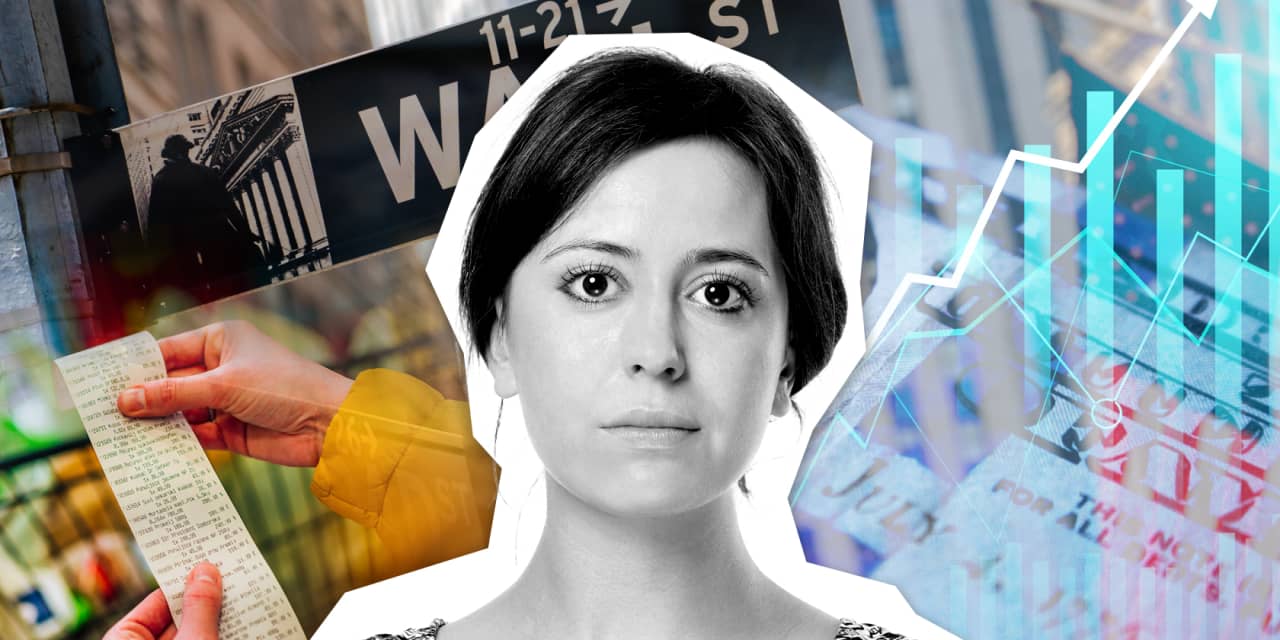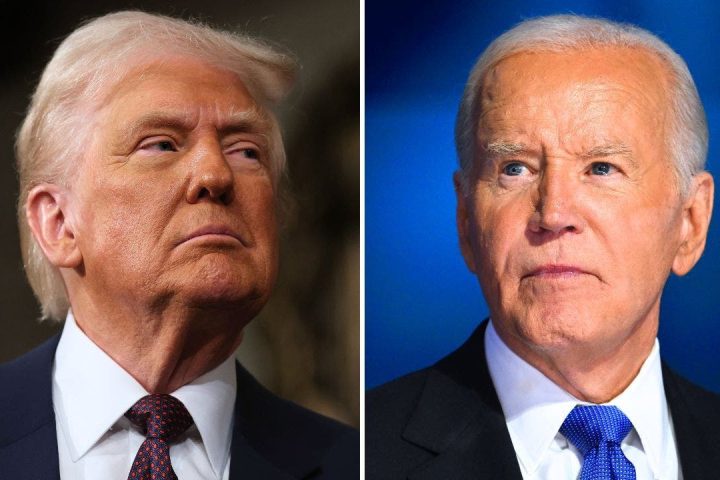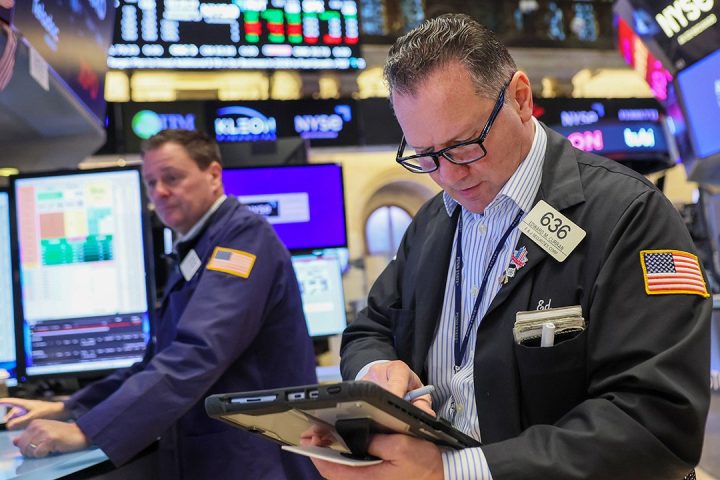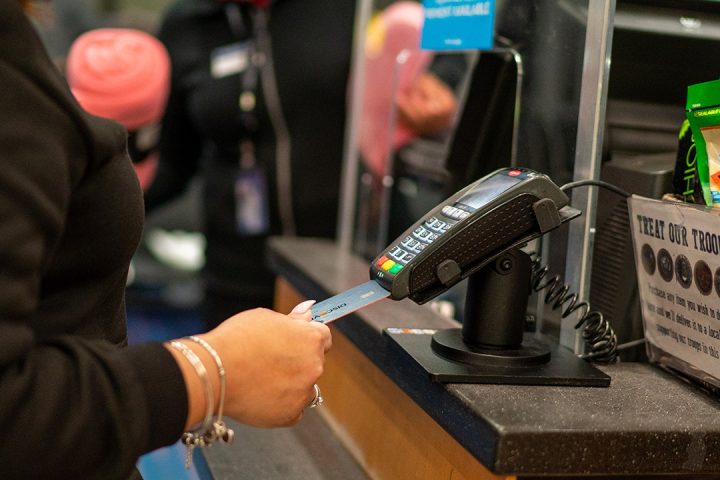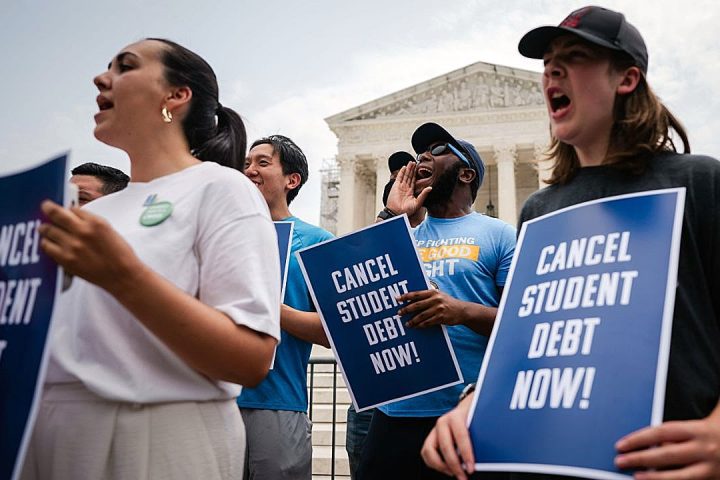According to investors, Tuesday’s inflation report was something to celebrate.
After the latest numbers from the Labor Department showed that consumer prices didn’t rise as fast as expected in October, the Dow Jones Industrial Average
DJIA
jumped nearly 500 points and the S&P 500
SPX
and Nasdaq Composite
COMP
posted their best days since April. Wall Street seemed reassured that the Federal Reserve is likely done raising interest rates, and that the economy is on the right track.
On Main Street, the mood is less likely to lighten.
Measures of American consumer sentiment have proven persistently pessimistic in the last few months, showing that most people don’t feel great about the state of the economy despite cooling price increases and a strong labor market. The University of Michigan’s measure of consumer sentiment fell to a six-month low in November, and a Monday report from the Federal Reserve showed consumers don’t expect inflation to ease over the next year.
One potential reason for that gloomy outlook? While investors and economists monitor the inflation rate — a percent change measuring how much prices have increased, typically from year to year — most Americans are just looking at plain old prices at the grocery store, restaurants, gas station, and everywhere else they’re spending their money.
And unlike the consumer-price index, those prices probably aren’t coming down anytime soon.
“It’s not that prices are coming down, they’re just not going up as fast,” said Greg McBride, chief financial analyst for Bankrate. “That’s a point of confusion… People are expecting prices to come down, and by and large they’re not going to.”
Why doesn’t it feel like inflation has come down?
The inflation rate, which started rising in 2021 thanks to a number of economic phenomena spurred by the pandemic, has been steadily falling since hitting a peak of 9.1% last June.
“It is absolutely true that inflation has fallen rapidly,” said Kitty Richards, acting executive director at Groundwork Collaborative, a progressive economic policy think tank. “(Tuesday’s report) is a really good sign.”
Yet the prices of some day-to-day expenses are still rising relatively quickly, according to the Labor Department’s report. The cost of eating out was up 5.4% from last year. Baby food prices rose 8.3%, and frozen vegetables 10.7%.
The Federal Reserve works to control the pace of price increases by lifting interest rates, a move the central bank has opted for 11 times over the past couple of years. Aggressively raising rates has historically led to an economic slowdown — but so far, the U.S. economy has avoided that fate, notching strong growth in the summer and keeping unemployment low. That has surprised some economists and investors.
But even though the rate of price increases has come down, the actual price of many goods and services has remained well above pre-pandemic levels, said Michael Walden, an economist and professor emeritus at North Carolina State University.
“My perception is that people are comparing where they are today — and what they can buy — to where they were in 2019,” Walden said.
Wages have increased alongside prices, and household wealth has surged since 2019. But many households are likely just picking up on the fact that their dollars don’t stretch as far as they did just a few years ago, Richards said.
“Headline inflation numbers can really obscure important parts of what is really driving the cost of living for families in this country,” she said. “If you are a parent who… is making a little bit more in your paycheck, but you couldn’t afford child care before the pandemic and now it’s 30% more expensive, it’s cold comfort to see that prices overall are rising at a much slower rate than they were last year.”
“It’s a feel, not a math calculation,” Walden added. “And if you look at the data (since 2019), it’s correct.”
A potential political threat
Americans’ discontent with the economy could pose a potential political challenge for President Joe Biden in next year’s election.
Half of Americans said in a recent Bankrate survey their financial situation has gotten worse since the president was elected in 2020. Of those who said their situation hadn’t improved, 45% said they at least partially blamed Biden.
And voters’ worries about the economy were clear in a November poll by The New York Times and Siena College, showing that Biden trailed Republican forerunner Donald Trump in several key battleground states one year ahead of election day.
History shows high inflation isn’t necessarily a certain death knell for presidents facing reelection, Walden noted.
He pointed to President Ronald Reagan, who faced similar souring public opinion after double-digit inflation took hold in the early 1980s. He was still able to win a second term in a landslide election victory.
“People can quickly change their minds,” he said. “They’re always going to blame people in power.”
Could prices fall back to pre-pandemic levels?
The fact that pre-pandemic prices aren’t coming back is probably a good thing, Walden said.
When prices fall — a phenomenon known as deflation — it can stifle consumer spending because some shoppers delay making purchases, hoping that prices will fall even further. Deflation can also delay business investments and lead to other negative economic consequences, he said.
“When you have prices go down, that can cause some problems,” Walden said.
In 2023, U.S. wage growth started outpacing inflation, suggesting more workers might feel their income finally catching up to higher prices.
But those recent gains haven’t caught up to the cumulative effect of so many months of cost hikes, McBride said.
“Income may be growing faster than inflation now, but that wasn’t the case for the past few years,” he said. “It takes a while to catch up.”
Read the full article here
